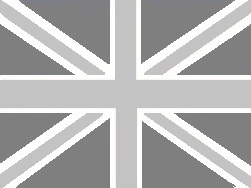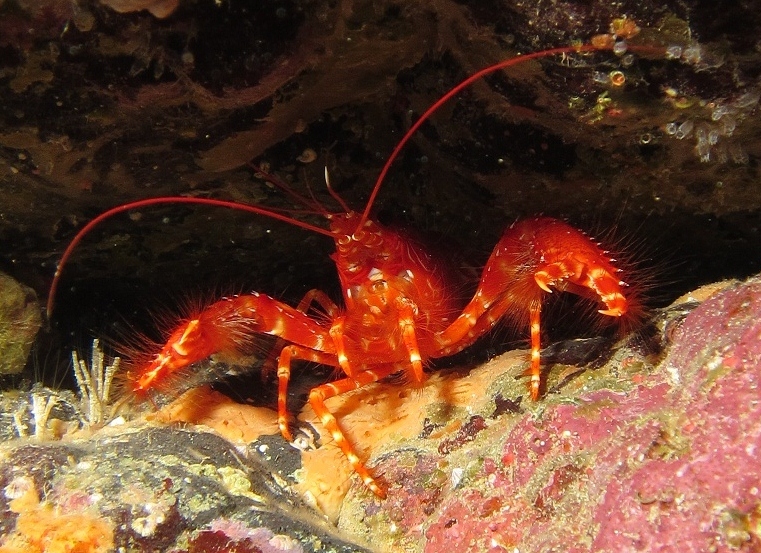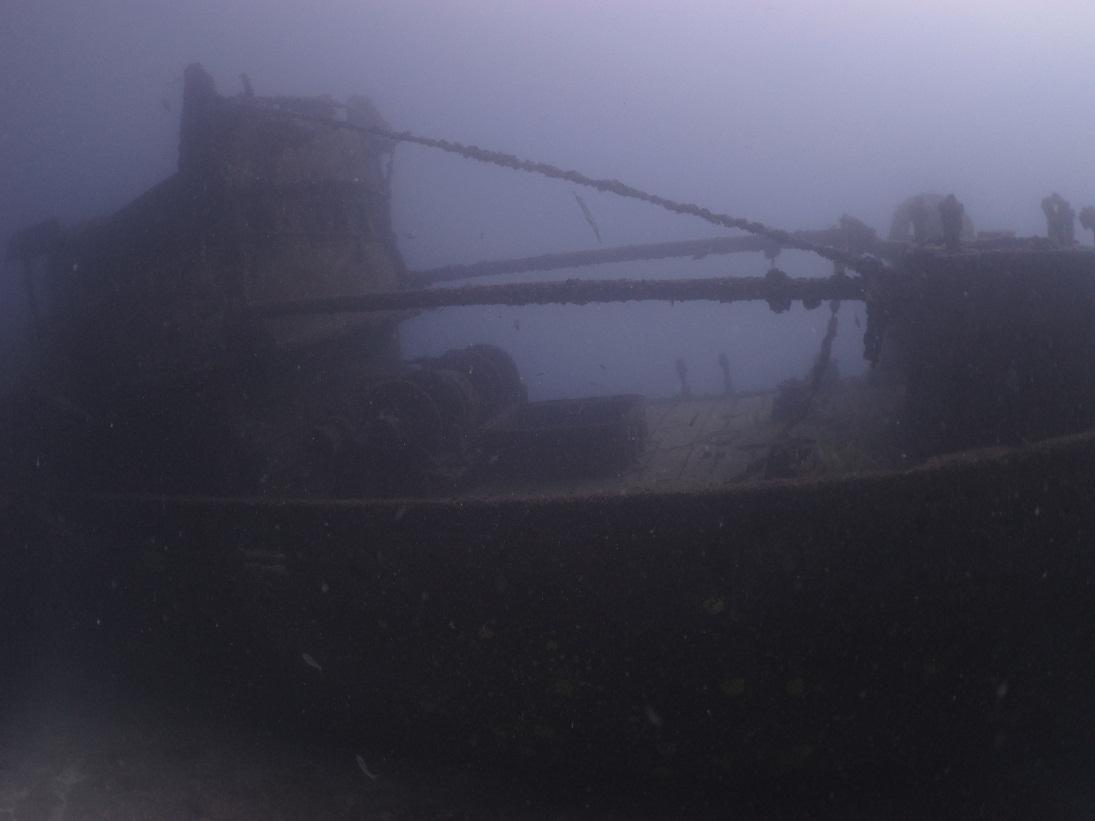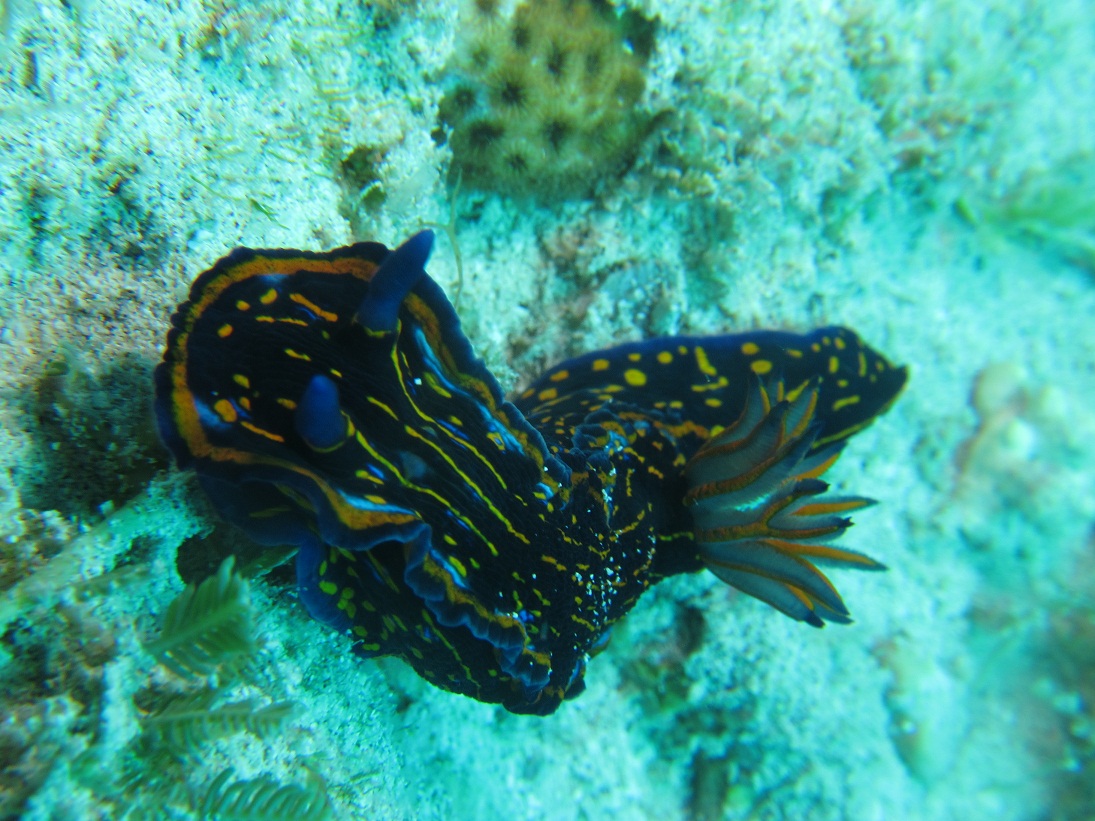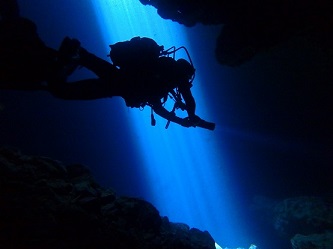Diving
The waters around the Cape Verde islands are influenced by Northern and Southern Atlantic currents as well as the upwelling off the African west coast. The Cape Verdean government has recently implemented a number of marine protected areas around Sal and commercial fishery by trawlers is restricted to the areas outside the 50 mile zone around the islands. Marine life is hence superbly rich and diverse and includes huge schools of fish, colourful corals, plenty of macro life, turtles and sometimes even big fish like round stingrays or nurse sharks.
Because of its isolation, the Cape Verde islands are home to numerous endemic species, on land as well as in the water. These include the Banded seabream (Diplodus fasciatus), the Cape Verde damsel (Similiparma hermani) and the Gomez snail (Pleurobranchus garciagomezi).
Water temperatures fluctuate between 27°C in summer and 20°C in winter and are also, during the hotter summer months, sometimes subject to thermoclines. The Cape Verde islands are situated in the trade wind belt with moderate to strong winds year round. We therefore often have currents and waves which can be somewhat demanding. However, we know dive sites to suit every training and fitness level.
The underwater world of Sal offers various attractions, including volcanic caves, wrecks and beautiful basalt reefs with overhangs and grottos and covered in healthy corals. One of the special marine sights in Sal are the underwater caves off the northwest coast, including the famous Blue Eye (Buracona).
We normally do a two-tank dive with the surface interval on the boat in the morning (start 8:30, return around 12:30), and a single dive in the afternoon (2:30 – ca. 4:30). We are open from 8am to 5pm every day except on Sundays. We are also closed on Christmas Day and New Year's Day.
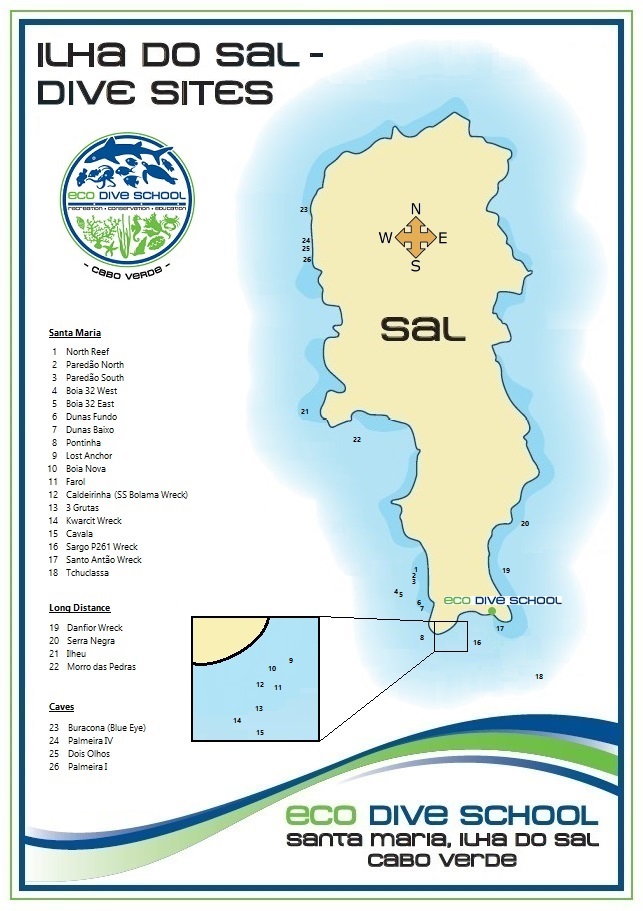 Map of the dive sites off Sal Map of the dive sites off Sal |

